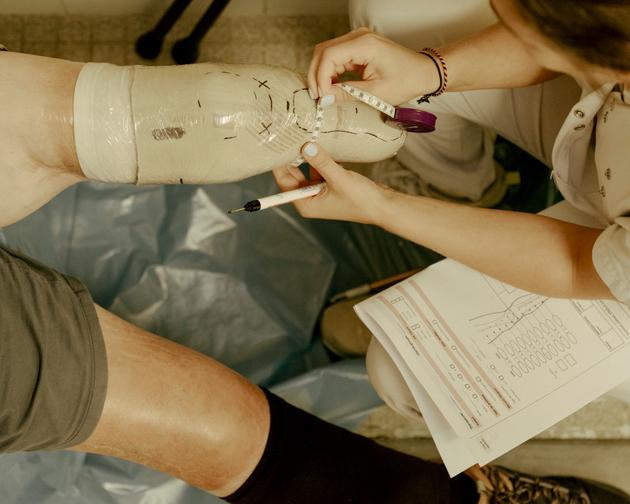From amputation to prosthesis, a long road on which research is making progress – Technologist
Alexis Hanquinquant, Typhaine Soldé, Clément Berthier, Laurent Chardard, Pauline Déroulède and Nélia Barbosa are all top athletes preparing to shine at the Paris Paralympic Games (August 28 to September 8) in a variety of disciplines. But they have one other thing in common: All of them have had one or more limbs amputated. Following a shark attack in La Réunion for Laurent Chardard, Ewing sarcoma (bone cancer) for Typhaine Soldé, a domestic accident for Clément Berthier, a genetic disease for Nélia Barbosa, a construction accident for Alexis Hanquinquant and after being mowed down by a car for Pauline Déroulède.
How many people in France undergo what the medical world calls major amputations every year – in other words, above the wrist in the case of upper limbs and above the ankle in the case of lower limbs? Listed in medical databases, these conditions are not monitored epidemiologically, as highlighted by an epidemiological study published in April 2023 in Kinésithérapie, La Revue. The article reported 1,616 major upper-limb amputations and 116,866 major lower-limb amputations from 2011 to 2020.
“Diabetes is the leading cause of lower-limb amputations [which are far more common than upper-limb amputations], and tends to affect the elderly,” said Gauthier Besson, head of the physical medicine and rehabilitation (PM&R) department at the Institut Robert Merle d’Aubigné in Valenton, southeast of Paris. “Other causes include road accidents, accidents at work, cancer and infections. Most often in young, active subjects. The same applies to the upper limbs, where two thirds of amputations are due to accidents.”
‘Over 30 operations’
“There are two main timescales in traumatic amputations. Emergency amputation because the accident has interrupted blood circulation or caused such severe bone and muscle damage that amputation is immediately necessary. It can also be carried out at a later stage, in slightly less serious cases, by first attempting to preserve the limb despite its dilapidation. Sometimes, however, we have to resort to amputation at a later stage,” explained Laura Marie-Hardy, an orthopedic and traumatological surgeon at the Pitié-Salpêtrière Hospital.

This was the experience of triathlete Alexis Hanquinquant, who was severely injured in 2010 and had an amputation three years later. Although his leg had been saved medically, it was causing him too much pain on a daily basis. “It wasn’t a decision that was taken for granted, because I really hoped that my leg would be saved. From 2010 to 2013, I underwent over 30 operations,” he said in an interview with Le Monde.
You have 74.97% of this article left to read. The rest is for subscribers only.


